OPEN HOURS:
Tuesday - Saturday 11AM - 6PM
Close on Sunday, Monday and Pubilc Holidays
For more information: info@sac.gallery
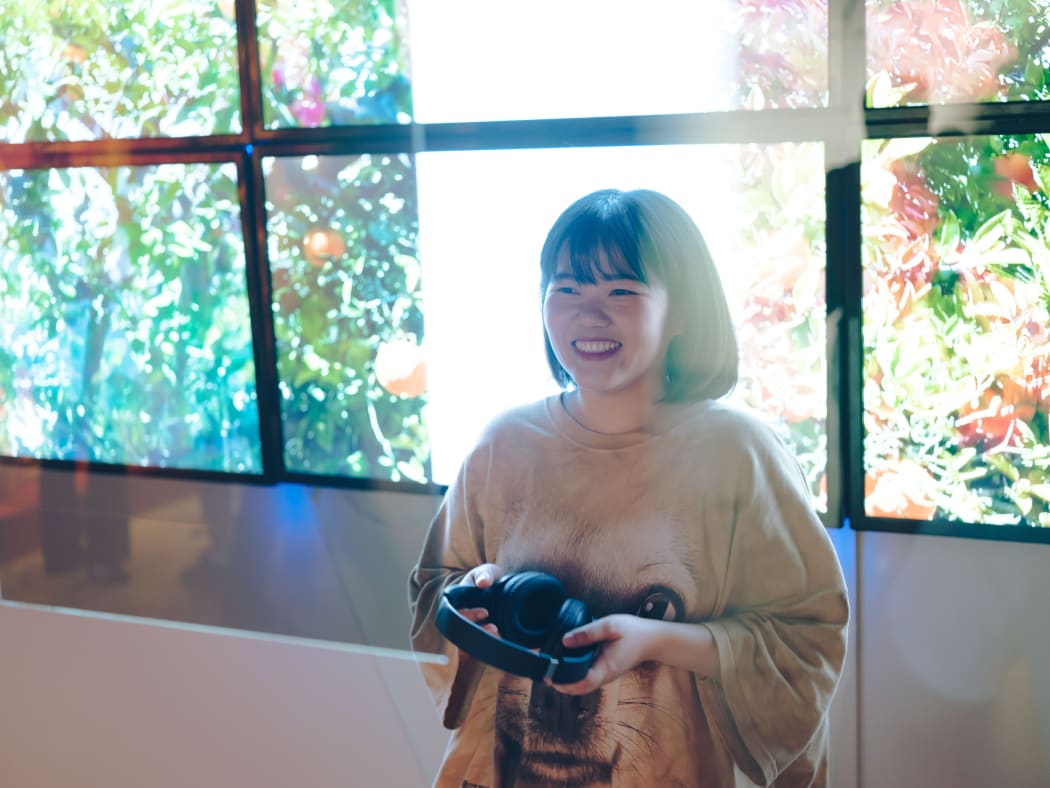
(English is below)
โดโจ-สรีนา สัตถาผล คือศิลปินหญิงรุ่นใหม่ที่น่าจับตามองคนหนึ่งในวงการศิลปะร่วมสมัยไทย หลายคนจดจำเธอในฐานะศิลปิน Performing Art ที่ถ่ายทอดเรื่องราวความเหลื่อมล้ำในสังคม อย่างเช่นงาน "Balen (ciaga) I belong" (2018) ที่นำกระเป๋าขนสัมภาระสีรุ้งมาเป็นอุปกรณ์การแสดงเมื่อหลายปีก่อน
ผลงานชิ้นต่อๆ มาอีกหลายครั้ง โดโจเลือกใช้จอโทรทัศน์และภาพเคลื่อนไหว มาเป็นเครื่องมือช่วยสื่อสารงานศิลปะที่เธอสร้างสรรค์ จนคล้ายเป็นเหมือนอีกลายเซ็นยามที่เห็นงานแนวนี้ ชื่อของเธอจะผุดขึ้นมาในหัวเป็นชื่อแรกๆ ไม่ว่าจะเป็น "We are marching towards non-existent" (2023) ที่สวีเดน และ "In the realm beyond spectrum" (2024) ที่ญี่ปุ่น
ในนิทรรศการ “Dynasty | Can we shape our Destiny?” โดโจยึดกำแพงฟากหนึ่งของห้องจัดแสดงนิทรรศการกลุ่ม นำเสนอผลงานผ่านแผ่นจออะคริลิก 6 จอที่แขวนเรียงกัน ดูเผินๆ อาจเหมือนจอเปล่าที่แขวนไว้ไร้ซึ่งภาพ ทว่ายามเมื่อผู้ชมมองไปที่ส่วนใดส่วนหนึ่งของของจอเล็กๆ ให้เหลื่อมทับกับจอขนาดใหญ่ด้านหลัง จะเกิดเป็นวิดีโอสีสันสดใส พร้อมเสียงที่ค่อยๆ ดำเนินคลอคู่กันไป
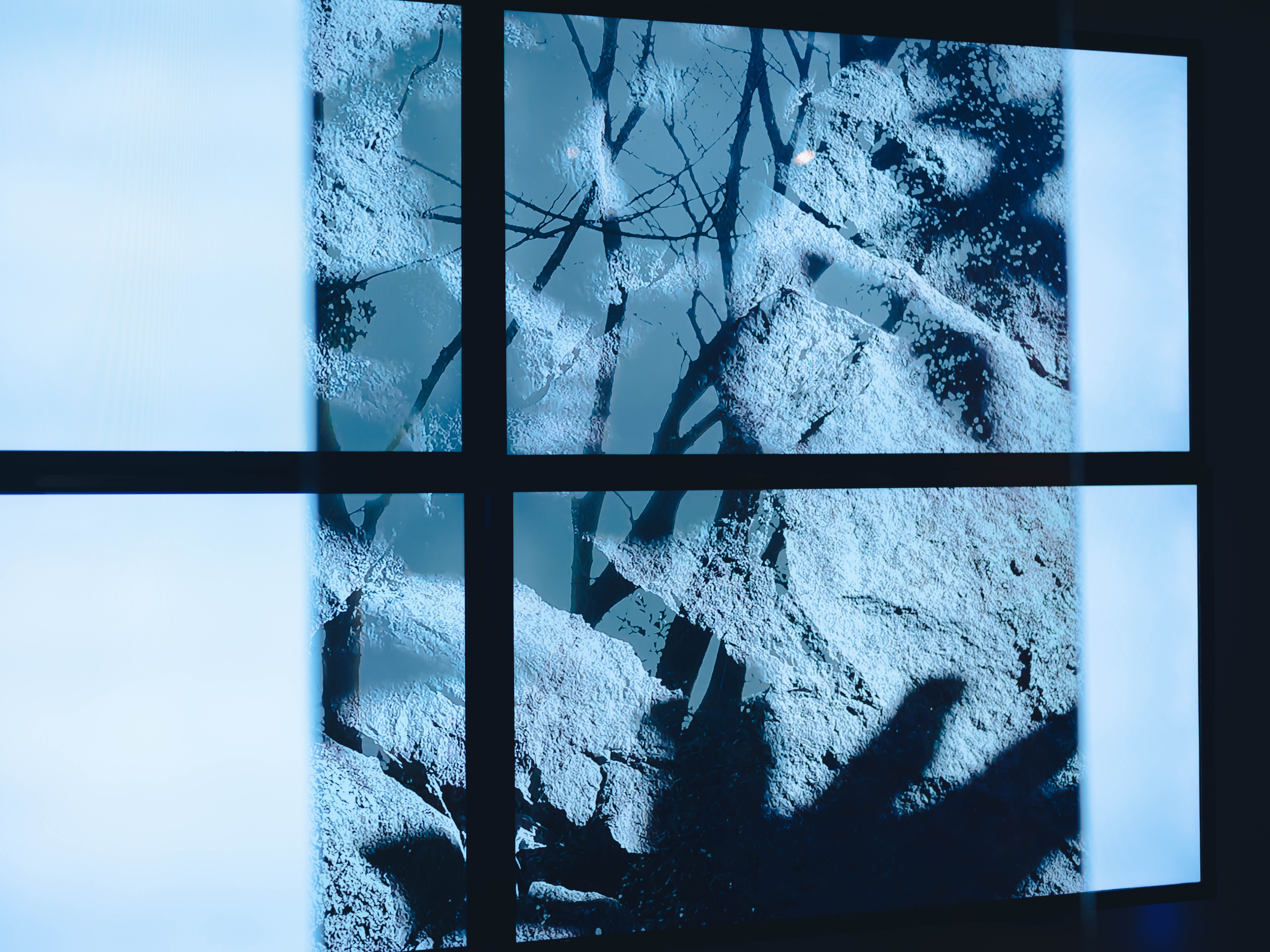
โดโจซุ่มทำงานศิลปะชิ้นนี้จากญี่ปุ่น บ้านอีกหลังที่เธออาศัย ในแง่หนึ่ง การที่โดโจได้มาใช้ชีวิตและสร้างสรรค์งานศิลปะที่ญี่ปุ่น อาจเรียกว่าเป็น “โชคชะตา” ก็ได้ แต่หากมองอีกแง่ เธอรู้สึกว่าเป็นผลจากความพยายามของเธอเอง ตั้งแต่การคิดทำผลงานและพอร์ตฟอลิโอ ไปจนถึงการลองสมัครทุนรัฐบาลญี่ปุ่น จนได้โอกาสครั้งสำคัญที่พาเธอมาถึงจุดนี้
ขณะเดียวกัน ความห่างไกลจากบ้านเกิดทำให้เธอได้สัมผัสกับคุณค่าของ “การเชื่อมโยง” อะไรบางอย่างได้ลึกซึ้งยิ่งขึ้น เธอจึงนำความรู้สึกนี้มาขยายความถึงสายใยความเชื่อมโยงที่อาจไม่เห็นหรือไม่เคยรู้ว่ามี กระทั่งได้สัมผัสเมื่อมีเหตุการณ์บางอย่างเกิดขึ้น
"In the Realm beyond Spectrum" (2025) ผลงานชื่อเดียวกับที่จัดขึ้นที่โตเกียว โดโจสร้าง Mocumentary โดยเอาเรื่องของคุณป้าที่อาศัยตามลำพังในประเทศไทย ที่แต่เดิมศิลปินมองว่าเป็นเพียงหญิงชราขี้หงุดหงิด และความเชื่อมโยงระหว่างโดโจกับคุณป้านั่นพร่าเลือนมากจนเกิดเป็นเครื่องหมายคำถาม แต่เมื่อคุณป้าป่วยและมีคนรอบข้างเข้ามาดูแล กลับทำให้ศิลปินมองเห็นความเชื่อมโยงของเครือข่ายความสัมพันธ์อันแนบแน่นของครอบครัวชัดขึ้น
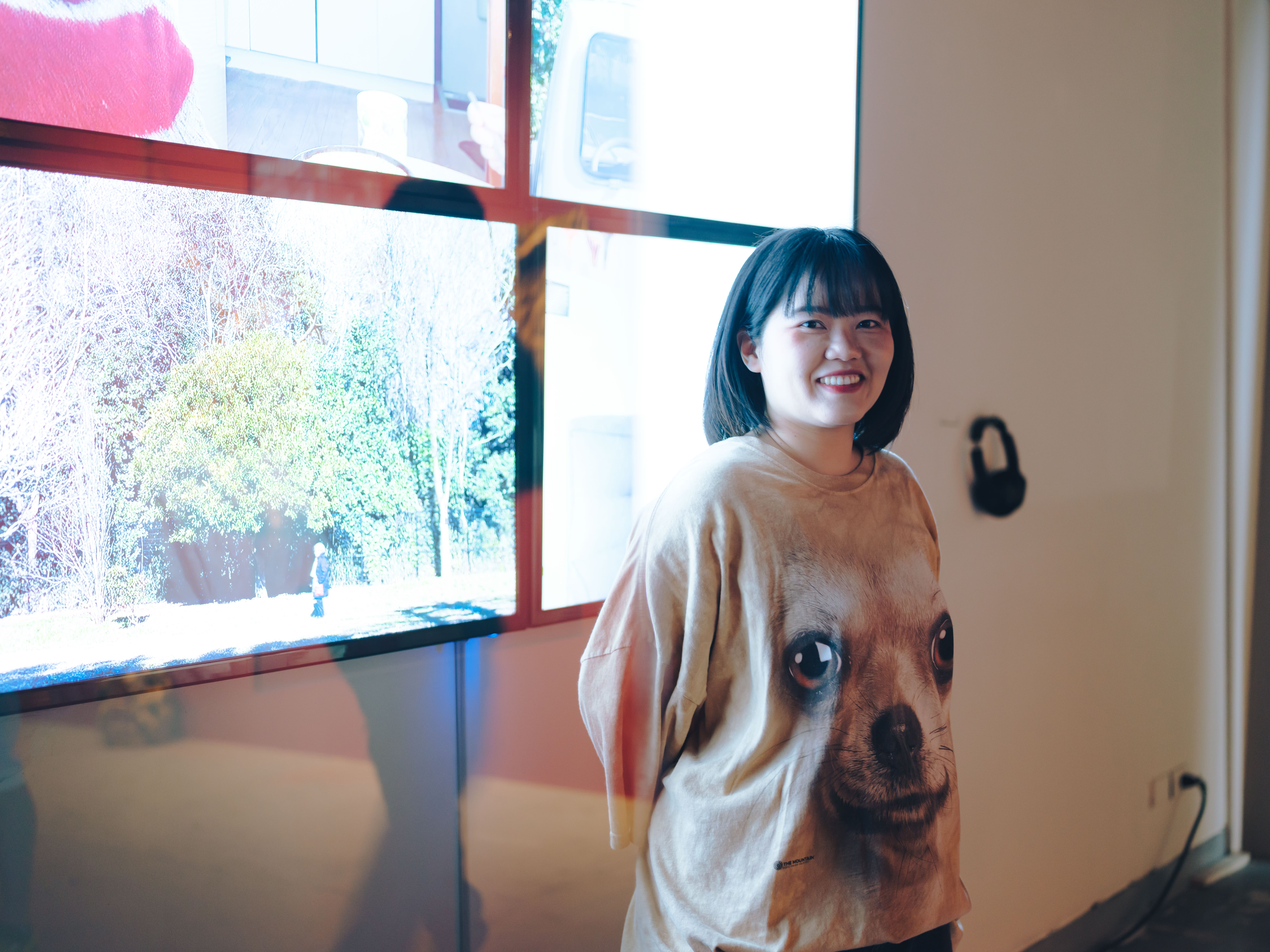
“ความสัมพันธ์เป็นสิ่งที่มองไม่เห็นแต่เราสามารถสัมผัสได้ เราอาจจะหลงลืมว่าเราต่างเกิดมาและสร้างสายใยมากมายต่อผู้คน ต่อโลก ที่เห็นได้ชัดเจนที่สุดก็คือสายสัมพันธ์ในครอบครัว” คือสิ่งที่ศิลปินหญิงคนนี้ต้องการสื่อสาร
ภาพชีวิตแสนธรรมดาของหญิงชราในวิดีโอ คือการเล่นล้อไปกับคุณป้าที่อยู่ในไทย เช่นกันกับฉาก สภาพแวดล้อมและบ้านเรือนในต่างประเทศ ต่างวัฒนธรรม ที่หน้าตาไม่มักคุ้น แต่หากมองให้ลึกเข้าไปถึงสิ่งที่ศิลปินกำลังสื่อ จะพบว่าเนื้อเรื่องของ Mockumentary ชิ้นนี้เชื่อมโยงถึงกันอย่างน่าประหลาด
รวมถึงผู้ชมที่กำลังดูภาพจากจอใดจอหนึ่ง จากมุมใดมุมหนึ่ง เพียงแค่เปลี่ยนมุมมองและมองเห็นภาพในจอ แม้วิดีโอที่แต่ละคนเห็นจะอาจไม่สมบูรณ์ แต่ในภาพรวมแล้ว นี่คือความตั้งใจของศิลปินสาวในการทำให้ผู้ชมกลายเป็นส่วนหนึ่งของผลงานครั้งที่ ผ่านการเชื่อมโยงทั้งภาพ เสียง และผู้ชม ถึงกันโดยไม่เห็นเส้นสาย
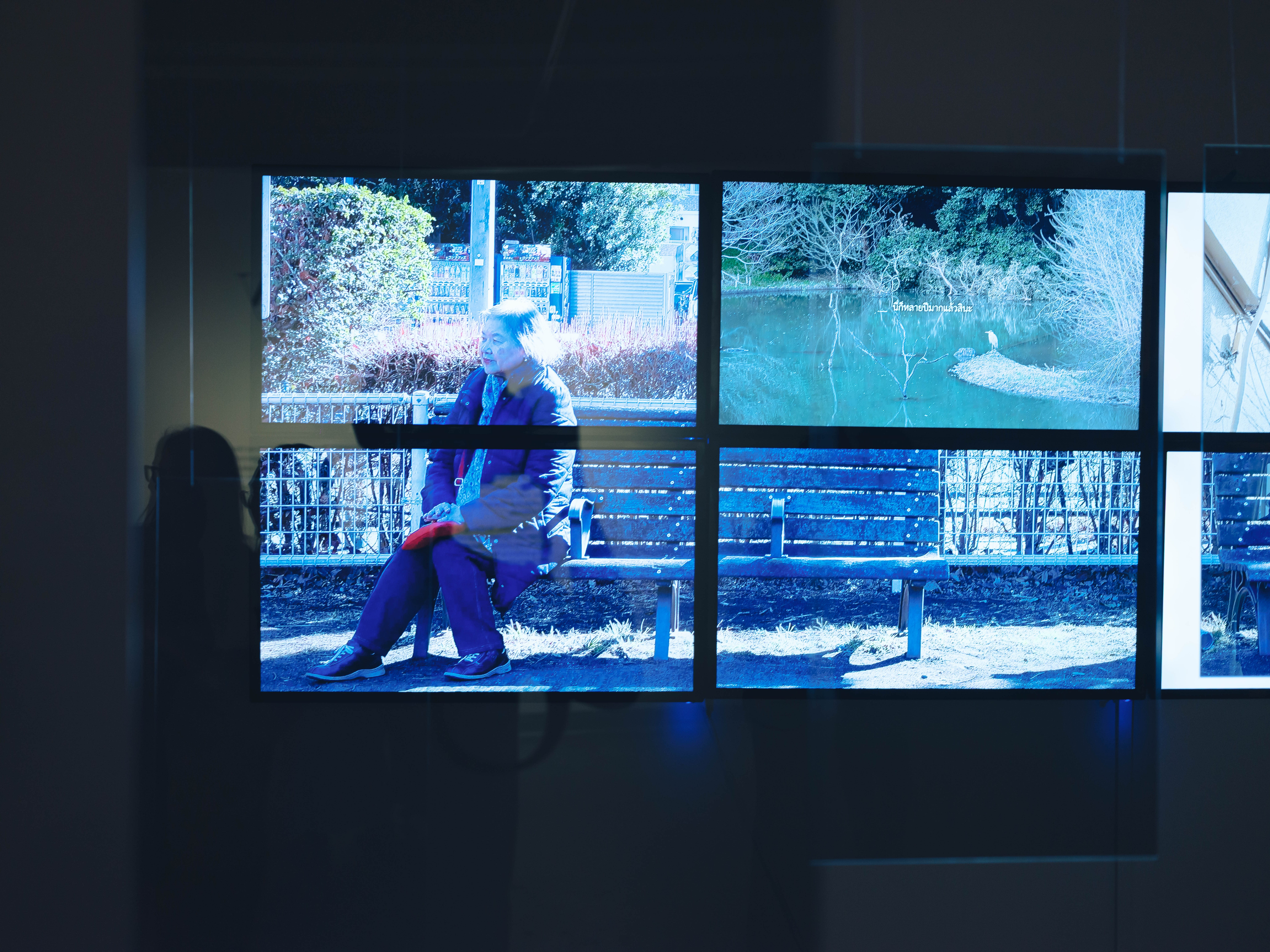
และแม้ผลงานจะเริ่มจากเรื่องราวคุณป้าของตัวเอง แต่เมื่อมองให้ดีจะเห็นว่า งานครั้งนี้ไม่ใช่เพียงเรื่องส่วนบุคคล หากแต่เป็นประสบการณ์สากลที่ทุกคนสามารถเข้าใจได้ เพราะทุกคนมีสายสัมพันธ์ที่ผูกโยงกับคนรอบตัว ครอบครัว และสังคม ไม่ต่างกัน
Dojo Sareena Sattapon is one of the most compelling emerging female artists in Thailand’s contemporary art. Many first came to know her through performance art that often explores issues of social inequality. A notable early work was "Balen(ciaga) I belong" (2018), where she transformed a rainbow coloured luggage bag into the core object of her performance.
Over the years, Sattapon has increasingly turned to television screens and moving images as her medium of choice, a recurring motif so distinctive that her name often comes to mind whenever such works appear. Among them are "We are marching towards non existent" (2023) in Sweden and "In the Realm Beyond Spectrum" (2024) in Japan.
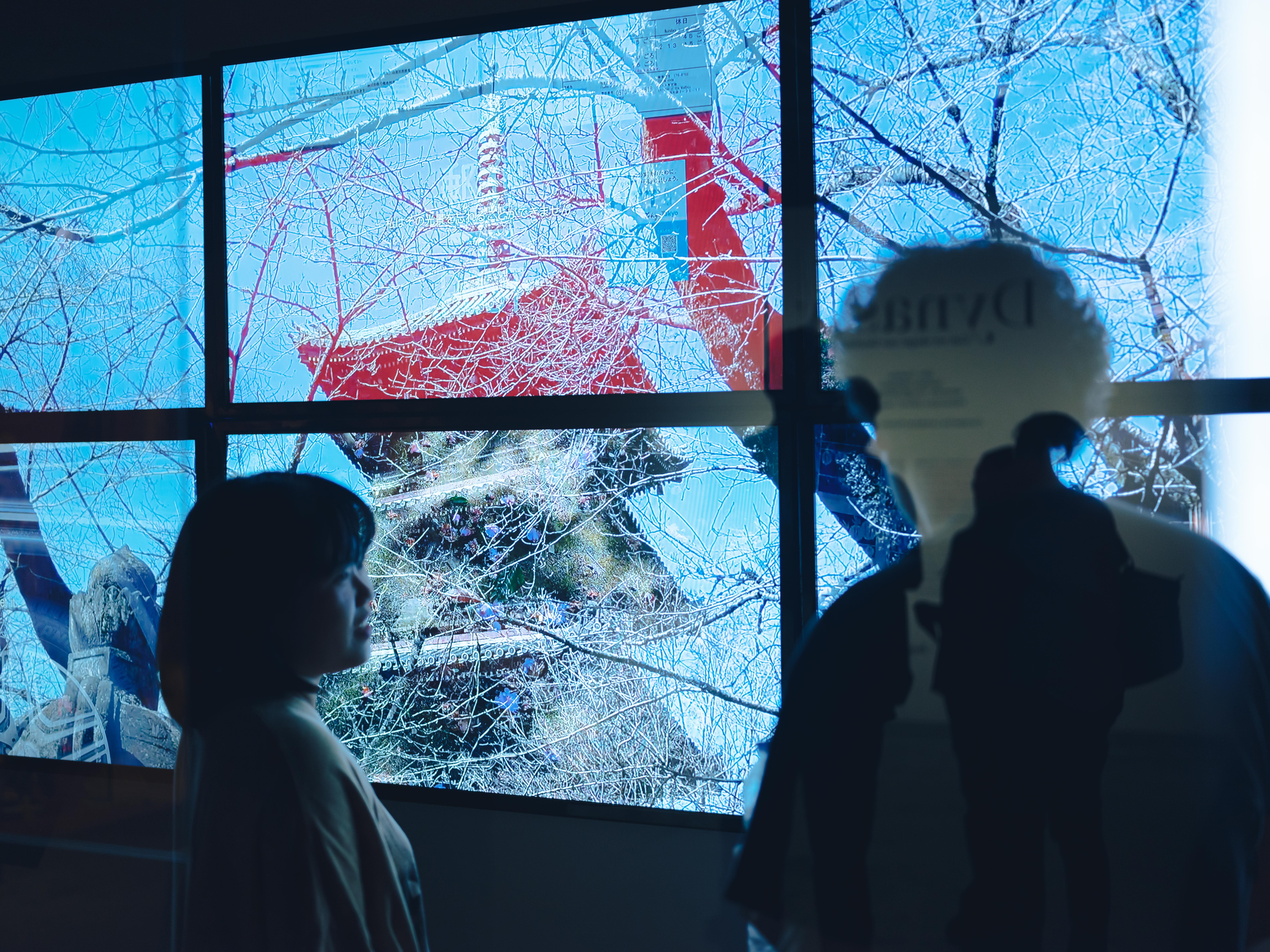
In the group exhibition "Dynasty | Can We Shape Our Destiny?" Sattapon claimed an entire wall with an installation of six suspended monitors arranged in cascading layers. At first glance, the screens seemed blank, but when viewed from certain angles, aligning smaller screens against a larger one behind, vivid video sequences slowly emerged, accompanied by sound unfolding in tandem.
The piece was developed quietly from her base in Japan, where she now lives part time. To Sattapon, this might be seen as “destiny,” yet she regards it equally as the result of persistence: building a body of work, curating a strong portfolio, and seizing opportunities such as applying for a Japanese government grant. These steps eventually opened doors to where she stands today.
Distance from home has also made her acutely aware of the value of connection. That awareness became the seed for exploring invisible threads of attachment, connections that often remain unnoticed until life events make them felt.
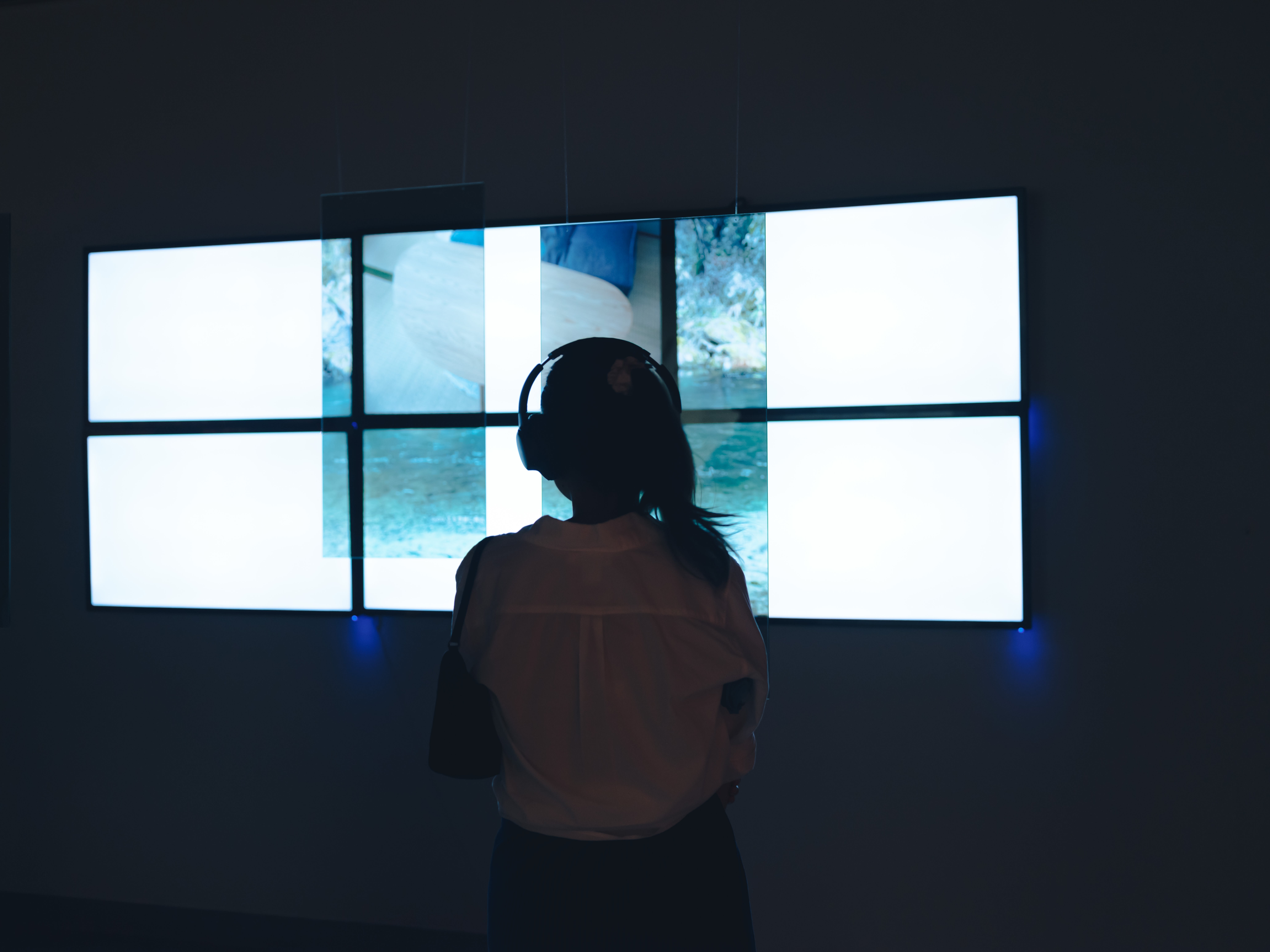
Her recent project, "In the Realm Beyond Spectrum" (2025), expands on this inquiry through a mockumentary. The work centres on her aunt in Thailand, a woman she once regarded simply as a grumpy old lady. Their relationship seemed tenuous, almost negligible. Yet when her aunt fell ill and others gathered to care for her, Sattapon was struck by the resilience of familial ties and by how networks of care reveal themselves most clearly in moments of need.
“Relationships are intangible, yet deeply felt. We forget that from birth we are bound by countless threads to people and to the world. The clearest of these is the bond of family,” she explains.

The mockumentary juxtaposes the everyday life of her aunt in Thailand with contrasting imagery of homes and settings abroad, scenes unfamiliar at first sight yet resonant when viewed through the lens of connection. The work is deliberately incomplete for any one viewer. Depending on which monitor is watched, fragments of video emerge, but only together do they form the whole. In this way, the audience itself becomes part of the work, linked through shared perception of image, sound and presence.
Though rooted in a deeply personal story, the work transcends autobiography. It becomes a universal reflection on the ties we each carry with family, with those around us, and with society at large.
Tuesday - Saturday 11AM - 6PM
Close on Sunday, Monday and Pubilc Holidays
For more information: info@sac.gallery
092-455-6294 (Natruja)
092-669-2949 (Danish)
160/3 Sukhumvit 39, Klongton Nuea, Watthana, Bangkok 10110 THAILAND
This website uses cookies
This site uses cookies to help make it more useful to you. Please contact us to find out more about our Cookie Policy.
* denotes required fields
We will process the personal data you have supplied in accordance with our privacy policy (available on request). You can unsubscribe or change your preferences at any time by clicking the link in our emails.